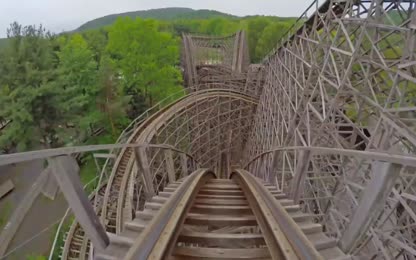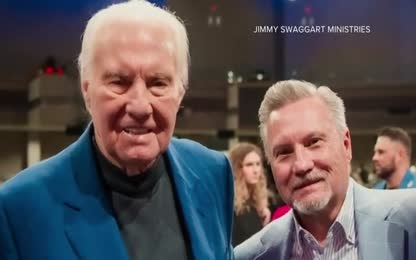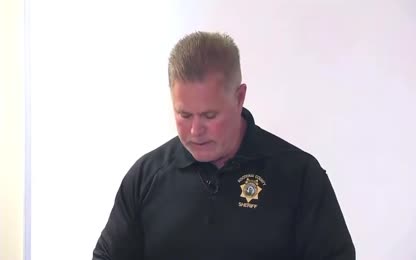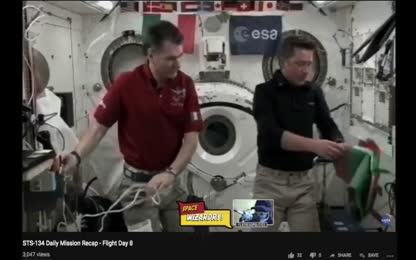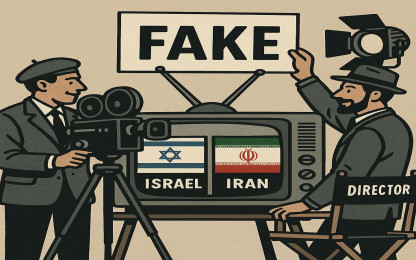Advertisement
Apollo Sweet 16 - 'Nothing So Hidden' 1972 NASA's Fifth Moon Landing :)
NASA faking the fifth Moon Landing - This is NASA's original footage from 1972
- Category: Busted / Exposed,Fake News / Fake News Inc,NASA / ISS /Mars/ Moon Landing,Propaganda / Psychological War
- Duration: 28:23
- Date: 2018-02-28 09:43:53
- Tags: fake moon landing, nasa, apollo, fakex, spacex, lies, liars, fake space
2 Comments
Video Transcript:
April 16, 1972. Apollo 16, man's fifth lunar landing sat silently on the pad awaiting its mission. Inside the astronaut quarters, its relaxed crew ate Sunday breakfast. John Young, the veteran of three previous space flights, was commanded. Ken Mattingley, command module pilot, would conduct orbital experiments around the moon, while Charles Duke explored the lunar surface with young. April 22, young and Duke would find themselves strapped into a small electric car called the rover, bouncing across the lunar plateau known as Descartes. Apollo, water bag and working super, this is going to be a good day, Charlie. Yeah! Oh, man, that's a great mix of it. We're doing a 10-click, Tony. Covered thing we've done for that one. As young and Duke rode the bucking rover to the lunar formation called Stone Mountain, NASA geologist Farouk Elbaz rode on a blackboard on Earth. There is nothing so far removed from us to be beyond our reach or so hidden that we cannot discover it. René Descartes, as John Young would later remark, Apollo 16 would certainly help prove that René Descartes was right. Almost like a freshly-ploughed field that's been rained on. Yet less than two days before, it looked as though this would never happen. It was, in Young's words, a real cliffhanger. The Marshall Space Flight Center team was working on a launch vehicle gyroscope problem that threatened to scrub the mission. Less than an hour before liftoff, their advisory to the Kennedy Space Center launch team was GO. The liftoff had been perfect. During the three-day flight to lunar orbit, the problems encountered had been more annoyances than critical, such as paint flaking off the lunar module, and later a jammed antenna in one of the lunar module's several communication systems. All in all, it had been a quiet flight. April 19, the burn into lunar orbit was right on. The subsequent maneuvers all went without a hitch. Then the next day, April 20, Young and Duke undocked the lunar module, preparatory to landing, leaving mattingly in the command module. The next maneuver was for mattingly to burn the main engine of his spacecraft, to put it into a circular orbit. But as the lunar module emerged from behind the moon, no circuit, in preparing for the circularization burn, mattingly had found apparent uncontrolled oscillations in the main engine's backup control system. Following mission rules, he did not make the burn. How long do you think it's going to take him to get rid of the theory? I think you're in some of the couple of three rounds. With the backup system having trouble, only the primary system was known to be usable on the engine needed to get the astronauts out of lunar orbit and back to Earth. However, the lunar module engines could be used if the two spacecraft were docked. The first step in the problem solving technique, stabilize the situation in the safest manner, get the two spacecraft, which had separated, close enough together to dock, if necessary. I'm going to give them back together, get the things back that they want to get them mentally prepared to do with the new computer. But now don't take that all in, put it on, put it on, and then we pitch on it out loud. I'm going to take that myself, and be able to. I don't see any way we can pull it to the wall. At that moment, the chances for a landing looked pretty slim. But you look at a problem step by step. Step one underway, you look at step two. Analyze the problem as completely as possible within the time frame. We're sure make sure that that's problem, there's no way, no, no, no. We don't have any other redundancy or other routes. And in lunar orbit, mattingly flew the command module to a rendezvous, as young talked him in. Okay, I wanted you to leave. Okay. We're extremely likely to start an initial aid from North American, they're suspecting it a late-feet day. Feeling 45, objective it. The team was coming up to speed, not only at the Man Spacecraft Center, but from MIT and Massachusetts to North American in Southern California. Icelate the trouble, simulated, evaluated. You can't use it if you've got a broken wire, you don't know what's going to come back again. You know I like addressing the other way. Got a cord to pipe needle. Okay, I'll leave your needle. Of course, then you would have had options. I mean, that is full speed ahead. I just don't much see how we can make it on this next trip. Thank you guys, I'll continue to work. You'd say you'd only do it if you had a failure on the frame. Well, how would you ever get the damn thing trimmed then? I would, if I had a failure on primary, I'd shut it down. Now we might be going in the right direction. Yeah, you're going to get here. Yeah, I want you guys to simulate it. Isolate, simulate, evaluate. The results were coming in. It was beginning to pay off. The simulator tests and other data were showing that with the engine on, the oscillations would do no harm. Despite the earlier pessimism, it was beginning to look pretty good. Okay, when you come up on AOS on the next RAV15, we'll give you a go or no go for another try. Man Spacecraft Center Director, Dr. Christopher C. Crap, Jr. just came back into the control center after having attended a meeting by management people in one of the back rooms, and the situation is go for landing. Well, have editing, so we're going to try. You do have a go for another try here at the PDI on RAV16. Once more, they would pass behind the moon. And on the next revolution, John Young and Charlie Duke would start their swift descent to the Descartes Plateau. Okay, the donation session looks good. We'll let the A-Cermon. 200 Pro. Picked over. Picked over. Eh? And any asgator, load star? No! Oh, I'll be the thanks, Charlie. Okay, 40 to 38 degrees. Right. Alameda and Dott, North RAV16. Okay. Looks like we don't be able to make it. God, there's not too many blocks up there. Ryan, you go for landing. The right down looks pretty good. No, no, no, no, no. I can't anywhere. So let's go, Charlie. What are they doing here, man? They were doing a lot of work. So we're going to ask them, we're going to ask. That comes a shadow. Okay, down at three, 50C, down at four. Give me one click up. Back it up slightly. Take two down, stand by for current act. And a letter down, do level out. Put our home down. Take 56%, 25. Time back. Stop. Woo! Wow! Oh, man. Oh, Ryan, you finally hit yourself. And take it. The original plan had called for young and Duke to get out and explore shortly after landing. However, the nearer board had lasted six hours. The tired astronauts would sleep. Okay. April 21. Mission commander John Young stepped on to the Dakar formation, 11.58am, Eastern Standard Time. They are mysterious and un-nodate acts. Now, let's please, about 16 is to the team's your image. While their activities were monitored by mission control, young and Duke were also observed by scientists, located across the hall in the science support room. After unloading the rover from its storage bay in the lunar module, they planted the flag. Hey, John, this is perfect. We're the loom, and the rover and you, and the storm out. And the old flag. Come on out here and give me a salute. Take baby salute. I'll stick around for the more. There we go. Young set up an ultraviolet camera to provide the first astronomical observations from the moon. He took pictures of the Earth's upper atmosphere and magnetosphere and their interaction with the solar wind. He also photographed the interstellar gas present throughout space and the ultraviolet halos that appear around galaxies. Astronomers have long wanted a telescope on the moon. Perhaps this experiment would show the moon an ideal base for future astronomical observations. You want to paint? Yeah, we might do that. John sir. I'm not late at all. Duke drilled a hole into which a heat flow probe was to be placed. Part of one of the experiments attached to this station. As Duke drilled, young set up the central station and the remainder of the experiments. Then what many considered the biggest disappointment of the mission. Probably some just a little oxygen and an interregulatory. You know, it looks... I bet it's just like the side of that freighter we saw back there at the land. Charlie, what? Something happened here. What happened? I don't know. Here's a line that pulled loose. Uh-oh. That line is... That's the heat flow. Pull it off. Damn it, sorry. I didn't even know it. I didn't even know it. That means you've got to... You've got to make all those wires in there and have them insulated from one another. And if that doesn't occur, the world of chance is a short and out of the central station. Well, that's another one that they're working on. The only way is to fix the heat flow. On the moon, the astronauts continued with the other experiments. Young placed a series of sensors in the soil. Then fired explosive charges. Mapping the lunar subsurface, much as geologists on Earth use explosives to search for oil. 3, 2, 1, 5. They continued to sample the area and activate the experiments. Then they returned to the rover and prepared for their first trip away from the landing site, in search for geological samples. And here we go. Their first traverse would take them about one kilometer west of the landing site. They would make two stops to collect samples and conduct experiments. One of five two-man and five plants on the lake. Better to take a very spot. You're just beautiful. That is the most beautiful site. Look there. You're standing there on a railing at crater. I'm going to get this guy. I don't know if I'm going to have to use that. Young used a portable instrument to measure the local magnetic field. He would later record the most intense magnetic field ever found on the moon, far higher than scientists ever suspected. It's really some crater. As you come around there, there's a rock in the near field on this rim that has some white on the top of it. We'd like you to pick it up to the grad sample. This one right here? That's it. This one right here? That's it. You got it right there. Okay, we'll copy that. There would be one more stop before they got back to the lunar module to close out this EVA. With Duke acting as photographer and Young as driver, they put the rover through a full test. Man, you're a really bastard. Is he on the ground at all? He's in Plumper. Huh? He's got about two wheels on the ground. Okay, two sharp. I have no desire to turn sharp. Okay, isn't sharp. Hey, that's great. He's a big rooster tail at all four wheels. And it returns the scared to back in, the brakes loose just like on snow. Come on back, John. Hey, the deck is running. Then I'll tell you, he's never seen a driver like this. When he hits the craters and starts bouncing, it's when he gets his rooster tail. He makes sharp turns. Then it was back to their lunar base. Activate experiments and close out EVA1. PY's exercise. They're right. That's the level. That's right. We don't take pictures of the hot dog. I don't think so. I'm a team. Show me the low residue. I protein died. On Earth, the scientist took a break. Tomorrow would be another busy day. April 22nd. The lunar surface temperature in the sun should be around 135 degrees today. Today, they were headed a little over four kilometers south. To climb their rover up the side of Stone Mountain. We are really going up the hill. I'll tell you. Their first station, a crater, 700 feet above their lunar module. Wow, I want to play. What a view, isn't it John? Absolutely unreal. We have really come up here, Tony. It's just spectacular. I have never seen it. I can say spectacular. I know you all are sick of that word, but that's not vocabulary. It's so limited. Let's see what we can do. We've got that right soil. We've got it certainly. Something you can go to one man's sampling and maybe do it. They would make a total of six stops on this traverse. Collecting samples from large rocks, down through the intermediates, through the smallest soil particles. They would operate experiments measuring the strength of local magnetic fields to measuring the resistance of the soil to compaction. They would come along away. Hey John, this is the area you're going straight across. That was fun. Finally, it's real. Okay. I was just not walking up there. The sampling time used up. It was time to return to the rover, head back to the lunar module. And we did it in two minutes last travel time at the entertainment free plan. Fantastic. Tony, how about an extension you guys? We feeling good. Is that all we could do than I was sitting in a park? But with the limited oxygen and water in the backpacks, it was finally time to close out EVA too. Okay. Now I think they realize that it's not more, well, a G-Wiz, like my friend say, it's real, but it's real exploration. And this is much more serious and much more important for the future of mankind than just to plain exploit the technical or technological exploit. This is exploration. Ray Bradbury claims that what mankind sees in the exploration of space is his first chance at immortality since he's since he invented religion. April 23rd. The decision had been made not to try and fix the broken heat flow experiment because of the time and complexities involved. Proverse number three. Today, young and Duke would head north about five kilometers to North Ray crater. The largest lunar crater to be sampled by men. I'm Spanish. Hey Tony, it seems to me that this is a, a more seduced surface over here than going towards South Ray. Oh, spectacular. Wow. Very girl, beautiful. I gotta keep my eye on the ground. That's great. Jack, that's a good point to remember. All three crews now tend to take their there before they get there. I remember. And as a thing, I have people all. They took 60 degrees. Now I say I can't feed to the bottom of it. Now I'm supposed to eat as I'm gonna get. That's true. Now, the routine, if anything on the moon can be called that. Test, collect, photograph. Keep moving. Time is precious on the moon. The crater, they look like drill holes is what they look like. You do that when it's dangerous and you get around, snake. Here you get permanently shattered soil. How about rolling that one over? No way. Then, one of the most spectacular discoveries of the mission. Look at this time, it's a big, it's a big end. It may be further away than we think. It's not very, it's right behind you. And we better press on to the big boulder. Okay, we're headed that way. You get the tongue, tongue. Yep, I care. And the rake. That big black dot. Fantastic. We're going down to the right. It's right here. If we could feed to the bottom, we could say for here if the big black rock is right out of the bottom. But my guess from the old photographs is probably it. Okay, that's not like a good guy. God, you doing the word headed? I'm going to stand right there. Look at the size of that rock. I'm curious what thing I look like when I stand next to it. We can see. First I get to it, the bigger it is. But look at the perigietta part, Curly. On this side over here. And as our crew is fully. We better process this period into the sun. I'm ready. Well, that's your half rock right there. Very good. Get your near the edge of that. Take it falls off. Look over it. Look over it. You're right. It falls off. Keep going. Can't pull it out. I can't even. Okay, let's go on back. I am. Stay right with you. And we encourage you just to look for some variety. But now it was time to head back to their base and close out the EVA. All right, we think you can just about head soft now. All right. Woohoo! That's it. We're going home again, home again, dig a dig. During the previous EVA, a section of a rear fender had come off the rover, causing the astronauts to receive occasional showers of lunar dirt. And that's a beautiful fight. Young parked the rover then moved out to join Duke. Enter the lunar module and prepare for liftoff. Why here's the beauty of this place? It's absolutely incredible. Smile. FAL. Don't be mad. We're getting up there. See how nice and leisurely it's been? That's the way it should be getting ready for acid. 10 seconds. What a ride. What a ride. It's over time. Together in orbit, the two spacecraft, pirouette, each inspecting the other. Listen, one of the passes whenever it's upade in long time. The inspection's complete. The command module and lunar module maneuvered to docking. John Young, kinematically and Charlie Duke, reunited aboard the command module, settled down for tomorrow's tasks. Jettison the lunar module and burned out of orbit to come home. April 25, kinematically left the confines of the command module cabin, 173,000 miles from Earth. As he orbited the moon, he had not only made visual observations, he had been operating a complex series of experiments. Many of these had returned instant data to Houston. Two had taken thousands of high-resolution pictures of the lunar terrain. Now, madingly retrieved the film canisters and made his way back to the cabin with them. His Charlie Duke stood in the hatch to help him. It had been quite a mission. In John Young's words. I think we've seen as much in us. And ten days is most people seeing ten light times. April 27, the last day. The crew looked out their windows through the 5,000-degree fireball of reentry at their native planet. The crew was very lucky back then. That is beautiful. Now they're blooming. Beautiful. Beautiful. Beautiful. Follow control Houston and observer on the TACON derogha. Estimates the distance from the ship about one mile. Let's go on in the surface. Let's go on in the surface. Now, hold on. Now, hold on. You saw an example of goal-oriented teamwork in action. The kind of thing that made this country great and the kind of thing that's going to keep it that way. It's a real smooth shot. Every bit of it. Yeah, a broad of an ambience. Well done, young man. I'm standing. That's the guy anymore. I can't act. I'm throwing him back down on his fruit. We're done. Mike, catch the right one. That was nice. He's got one more. He's got one more. He's got one more. He's got one more. He's got one more. He's got one more. He's got one more.










 Donate
Donate